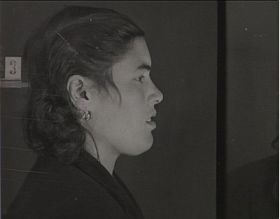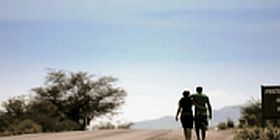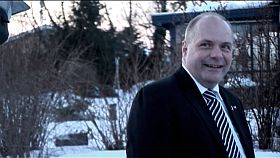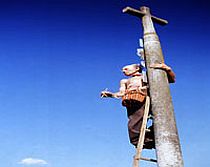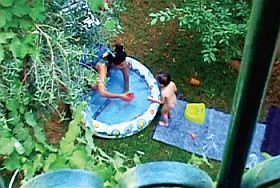


Xiaolu Guo: We Went to Wonderland
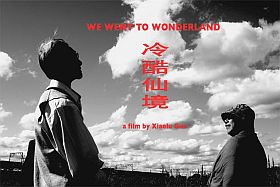
Masser af film bliver vist uden for konkurrence, og en fin ting på Cinéma du réel er ”værkstederne”, Dédicaces et ateliers, afdelinger for enkelte instruktørers samlede værk. I år er det Maysles (også her..), Marcel Hanoun, Michel Khlrifi (en enkelt film) og Xiaolu Guo. Jeg nåede to af hendes film og hun er et lidt spændende nyt bekendtskab. (Se hendes hjemmeside, link nedenfor.)
På en måde er det hjemmevideo. Instruktøren, som bor i London, har besøg af faderen og moderen hjemme fra Kina. En scene gentages to gange, tror jeg: moderen sover, faderen tager bad, det er ikke observerende kamera i direct cinéma forstand, det er aftalt og instrueret aktion, rejsens tid levet foran kameraet, for kameraet, så frit og ukunstlet at man smiler indforstået, filmen finder sin autenticitet i denne intimitet, ja, i selve privatheden. Det er cinéma vérité. Godard (og Varda?) er blandt forbillederne. ”La célèbre plaisanterie métaphysique de Jean-Luc Godard: ’Je fais des films pour occuper mon temps’ ”, citerer hun i en tekst i kataloget. Tiden ja, og hun filmer Coutards grå nuancer af dagslysscener og egensindige beskæringer. Det er i hvert fald, hvad jeg kommer til at tænke på. Vemodig og glad, bølger ruller tilbage, værker bliver stående. Fascinerende uforståelige.
Historien er altså den, at instruktørens forældre på rejse til en anden verden, til England, hvor faderen er blevet opereret, med filmen er vi i rekonvalescensen, som han lever med alle sanser vidt åbne (han er maler og nu skribent også, da stemmen er væk), og moderen er med hele tiden som lige så opmærksom ledsager. De oplever og kommenterer de britiske omgivelser, senere kommer en rejse til kontinentet, til Rom. De forstår mindre og mindre, længes hjem. Men de resignerer i humørfyldt hjertelighed, i træffende og kloge bemærkninger, som koderen formidler på begges vegne. Ja, og så pakker de og vender hjem. Og filen slutter i en telefonsamtale mellem mor og datter: Ja, vi er kommet godt hjem. Ja, din far er i atelieret. Cinéma du réel. Virkelig tid. Virkelighed.
Xiaolu Guos roman A Concise Chinese-English Dictionary For Lovers handler (læser jeg et sted) om en kinesisk kvinde, som kommer til England, hvor hun dels mister sit navn, som ikke kan udtales på engelsk, dels ikke forstår, det hun møjsommeligt lærer at oversætte sig til. Hun møder en mand, også uden navn. De bliver elskende, skønt de ikke kan tale sammen, men alene hver for sig opdage deres egen identitet. Er det rejsens væsen? Kærlighedens? Forfatteren og filminstruktøren forfølger nok sine temaer, de store pakket i de små, i alt hun skriver, romaner og film. Et udfordrende bekendtskab at tage med fra den rige og brede Paris-festival.
Xiaolu Guo: We Went to Wonderland, Kina 2007, 79 min. Manuskript, fotografi og co-produktion: Xiaolu Guo, klip, musik og lyd: Philippe Ciompi, produktion og distribution: Perspective Films phciompi@btopenworld.com
